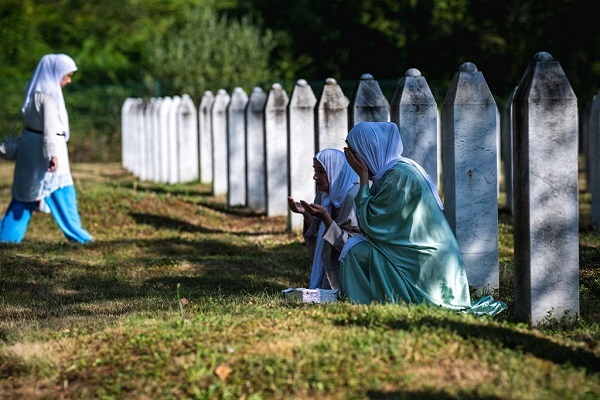Srebrenica Marks 30 Years Since Genocide with Burials and International Tributes

The eastern Bosnian town of Srebrenica held solemn ceremonies marking three decades since the massacre of more than 8,000 Bosniak men and boys by Bosnian Serb forces in July 1995. The atrocity, which took place after the fall of Srebrenica—a UN-designated "safe area"—remains the worst mass killing in Europe since World War II.
This year’s commemoration included the burial of seven recently identified victims, among them two 19-year-olds. Their remains were interred at the cemetery in Potočari, next to over 6,000 others who have been laid to rest in previous years.
Many of the victims were exhumed from mass graves across eastern Bosnia, often after being moved to secondary or even tertiary burial sites. In many cases, only partial remains have been recovered.
“Thirty years of search and we are burying a bone,” said Mirzeta Karić, standing beside her father’s coffin. “I think it would be easier if I could bury all of him. My father is one of the 50 [killed] from my entire family.”
Read More:
According to international and regional courts, a total of 54 individuals have been convicted for crimes committed in Srebrenica. The International Criminal Tribunal for the former Yugoslavia (ICTY) sentenced former Bosnian Serb leader Radovan Karadžić and military commander Ratko Mladić to life in prison. Courts in Bosnia and Serbia have also issued dozens of verdicts, including several specifically for genocide.
To date, 6,765 victims have been buried at the Potočari Memorial Centre. Around 1,000 more remain unaccounted for.
The UN General Assembly recently adopted a resolution commemorating the genocide annually on July 11.
Dignitaries from across Europe attended the anniversary, including European Council President António Costa, EU Enlargement Commissioner Marta Kos, and Croatian Prime Minister Andrej Plenković.
European Commission President Ursula von der Leyen posted on social media: “We must remember and preserve the truth, so that future generations know exactly what happened in Srebrenica.”
Source: Agencies



